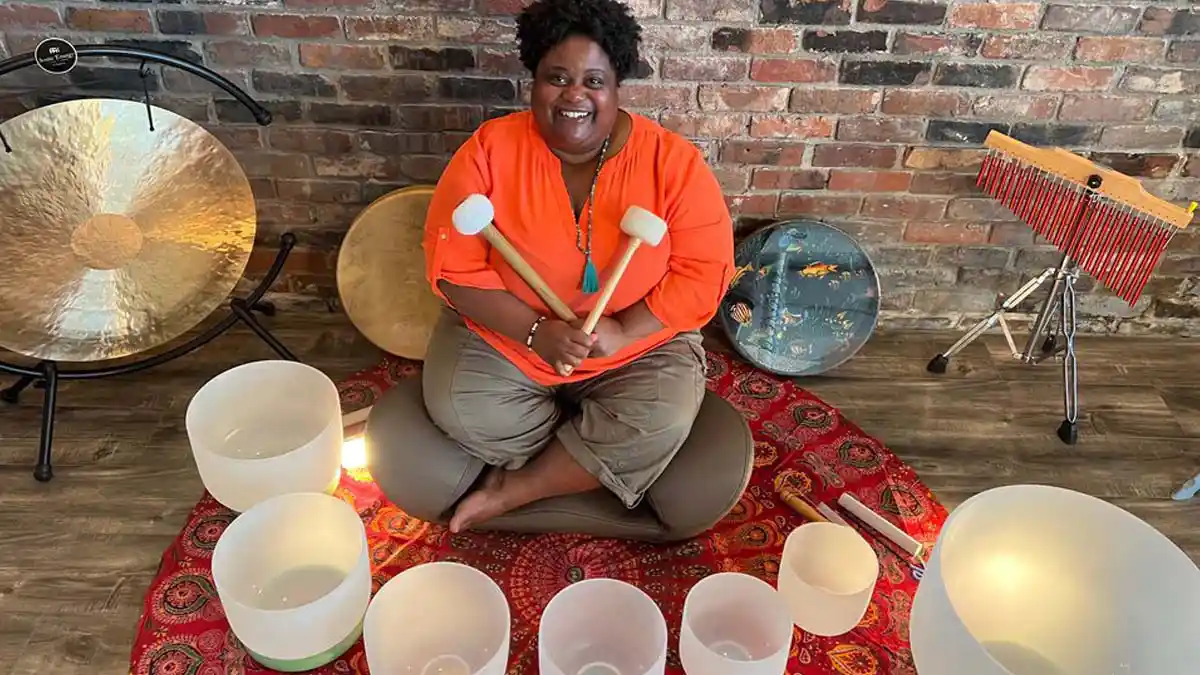Ancient holistic approaches to healing the body and mind have always existed, quietly closeted under the nebulous label of alternative medicine. Sound – or vibration therapy – dates back to earliest recorded times. Jubal, the “father of those that play the harp and flute,” is identified in the opening chapters of the biblical Genesis account.
Ancient Egyptians, and later the Greeks, valued the powerful relationship between music, the body and the human soul. In fact, the Greek philosopher Pythagoras was known to prescribe music as a medicine.
Native American tribes and other indigenous groups also have a rich history of attaching sounds and music to healing rituals, but it was not until the late 1800s that American doctors began to believe music could improve a body’s blood flow and a mind’s thought progression.
Today, therapeutic sound therapy has an enthusiastic following in the United States and across South Carolina, but is there any real science to support this unusual approach to healing mind, body and soul? Although little supervisory regulation exists, the studies are somewhat limited and they tend to cite each other, cell neurobiology may offer some support.
“Everything in the universe has a vibrational frequency. We’re hard-wired to have the sound be part of us. In the brain, all our neurons fire at different frequencies based on the data we receive from different frequencies,” explained Dr. Mark Menolascino, medical director of the Meno Clinic Center for Functional Medicine in Wilson, Wyoming. “Those vibrations interact with every cell in your body.”
“Sound therapy can be a mechanism to move the body into a more relaxed parasympathetic state and away from the stressful ‘fight or flight’ mode caused by anxiety or chronic pain. This process allows the body to relax as it decreases its cortisol output and increases its antibody production for better immunity, lowered blood pressure, improved breathing and reduced bone and muscle aches and pains,” he further explained.
Meet two enthusiastic South Carolina practitioners who are passionate about sound therapy and its healing potential:
Originally from Tennessee, Shenita Sanders was working as a marriage and family counselor when she first experienced vibration therapy. A compassionate person by nature, she found listening to families and individuals on a daily basis to be emotionally tiring and stressful. It only took one 45-minute session of sound therapy to feel that accumulated stress and anxiety roll away. Sanders was immediately hooked.
Fifteen years later, she is certified as a master sound therapist and operates her own business, Future Focused Coaching and Wellness in Greenville. Sanders offers both individual and group sessions and also teaches her clients how to purchase their own instruments and use sound therapy at home.
“Not only am I personally convinced in the healing nature of sound therapy, but the constant feedback from my clients keeps me going,” she explained.
Learn more: iamfuturefocused.com
In 2015, Beth Donovan was also introduced to the powerful restorative effects of sound therapy through her own personal healing journey, which came at a retreat in the Sedona desert.
“While nine different healers were present, two instruments – a steel drum and a didgeridoo – totally transformed my mental and physical health,” she offered. “I came out of the healing session, and the whole world was instantly brighter.”
In 2017, Donovan became certified through the Vibrational Sound Association, and, since then, she has added other certifications in related fields.
“I use all these wellness tools to maintain balance in my life. Meditation, journaling, sound healing, reiki, diet, exercise and nature are my go-to medicines,” she added.
Donovan offers healing help to others from her Bluffton, South Carolina, location: “Finding alternative medicines to assist you in your overall wellness is one of the best moves you can make for yourself.”
Donovan may be contacted through her business, Sol Balance LLC, by phone or text at 734-231-7766 or at solbalance.net.
Could sound therapy help you? Without more scientific data, Dr. Menolascino is cautiously optimistic.
“As a relatively inexpensive, noninvasive treatment, it probably can’t hurt you,” he suggested. “Anything that puts the brain in a calmer state will promote better healing, whether you have a broken leg, cancer or multiple sclerosis – as long as you are not doing it in place of other proven treatments.”
By Janet E. Perrigo







